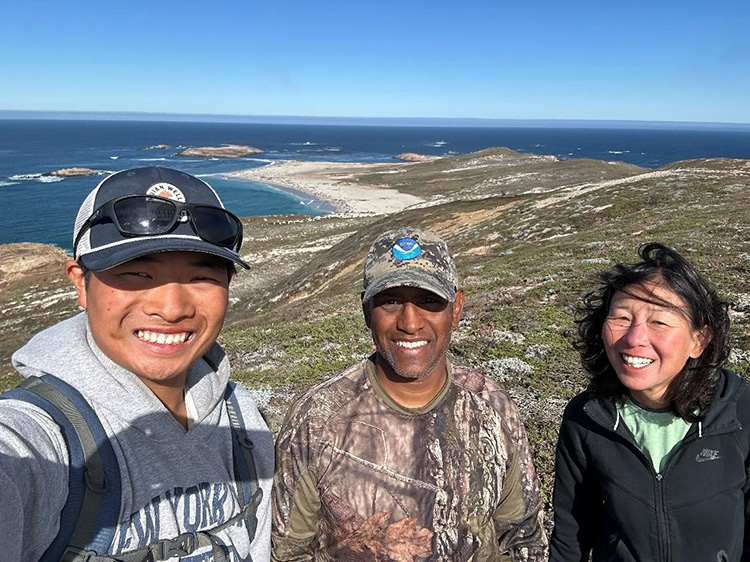Real-world research as an undergraduate: studying pinnipeds on San Miguel Island with NOAA
In the most recent cohort of University of Washington (UW) students participating in the NOAA Marine Mammal Lab internship program organized through SAFS, Chris Moon spent the summer of 2024 working with Dr. Tony Orr from NOAA Alaska Fisheries Science Center (AFSC), studying northern fur seals and California sea lions on San Miguel Island, California.
“As a native Californian, I have always been interested in the marine ecosystems off its shores and wanted to learn more about what role pinnipeds play in it,” Chris shared. Soon starting his junior year as an Oceanography major at UW, Chris became involved with the SAFS-MML internship program after hearing about it from his academic advisor.
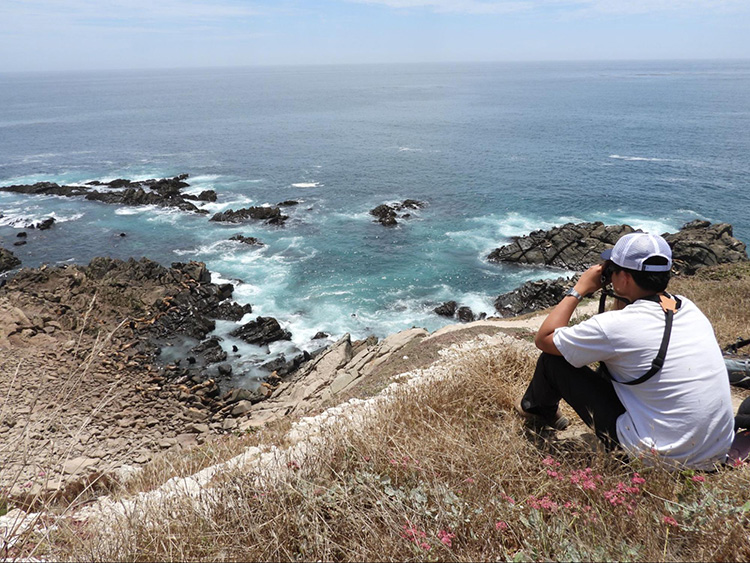
Conducting research in the remote field location of San Miguel Island, which is a part of the California Channel Islands, the internship experience reaffirmed Chris’ desire to work in the field in the future. “Being in the field for five weeks was a challenge I wanted to take on, and having a mentor like Dr. Tony Orr and learning from him and his decades of experience was very appealing,” Chris said. “Working with the fur seals and sea lions and observing their behaviors up close was the most extraordinary experience I’ve ever had. It was both overwhelming and awe-inspiring, I now know that working with wild animals is something that I hope to do in the future.”
Part of a long-term study undertaken by the Alaska Fisheries Science Center focused on pinnipeds (seals, sea lions and fur seals), the internship allows students to conduct research in real-time and experience what field work is like. For Chris, this involved hiking around the island looking for California sea lions that had been branded or flipper-tagged. This re-sight data provides researchers with information on survivorship, birth rate, and territorial tenure. Another key area of information gathered is mortality surveys California sea lion and northern fur seal pups. Supplemented with counts of live pups, population abundance can then be estimated for the year.
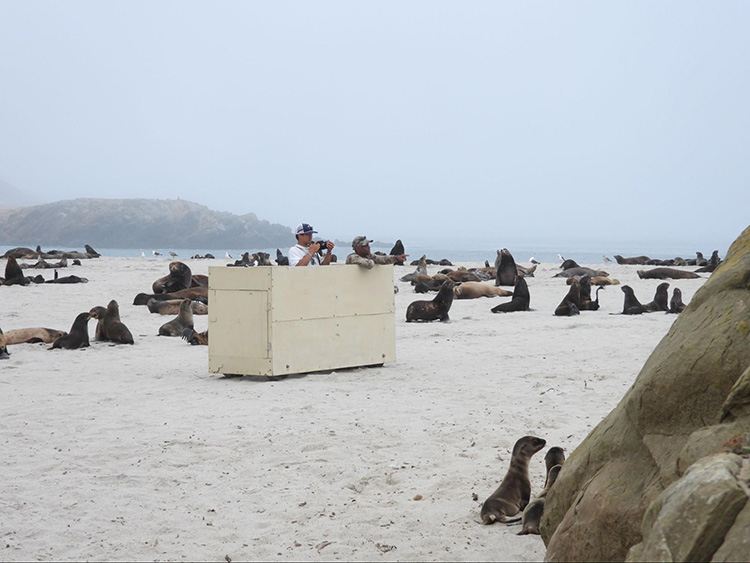
When asked if dead pup counts were higher, lower, or the same compared to last year, Tony Orr shared: “Mortality was pretty low, but this could have been for a couple of reasons. There seemed to be fewer northern fur seals on the rookery this year, and there were also flood ponds on a major rookery site, so carcasses could have washed out to sea. Mortality was low last year too, for possibly the same reasons. We’ll have to wait until we count the number of live pups to get a better understanding of what we saw on the island this year.”
Using his eyesight was not the only way Chris counted pinnipeds on the island. “In the past I’ve flown drones but seeing a drone used in a research setting was really interesting. I got to see how the drone was set up to fly autonomously and collect images that can be grouped to create a large mosaic upon which researchers can count individuals on,” Chris said. “Drones makes places otherwise inaccessible, accessible for the population counts. I can see them being used increasingly especially as they improve technologically.”
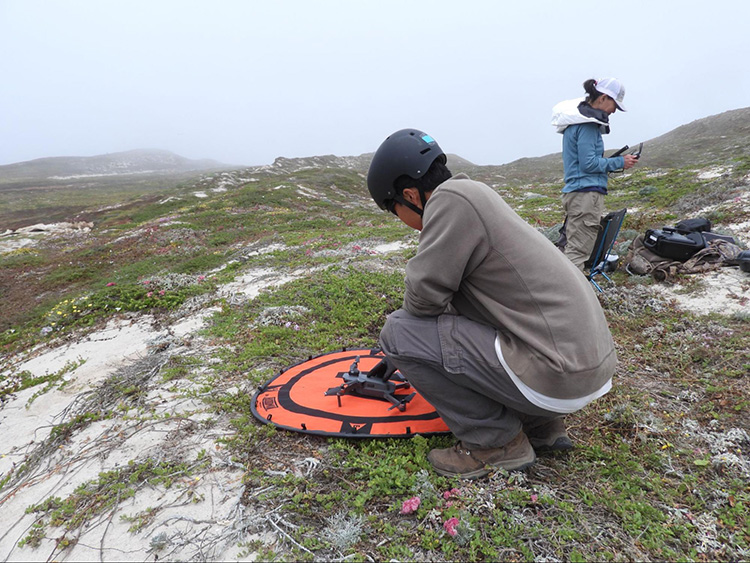
An important part of the internship for Chris was experiencing how field work translates to work back in the lab. “Spending a week at NOAA’s Alaska Fisheries Science Center was also an incredible experience. I’ve been able to participate in lab work with teeth, blood, and stable isotope samples,” Chris shared. “I’ve also had the chance to see what it’s like working in a lab like the Marine Mammal Lab; it’s remarkable to be around people that are so passionate about the work that they do and has absolutely inspired me to get to a place like this.”
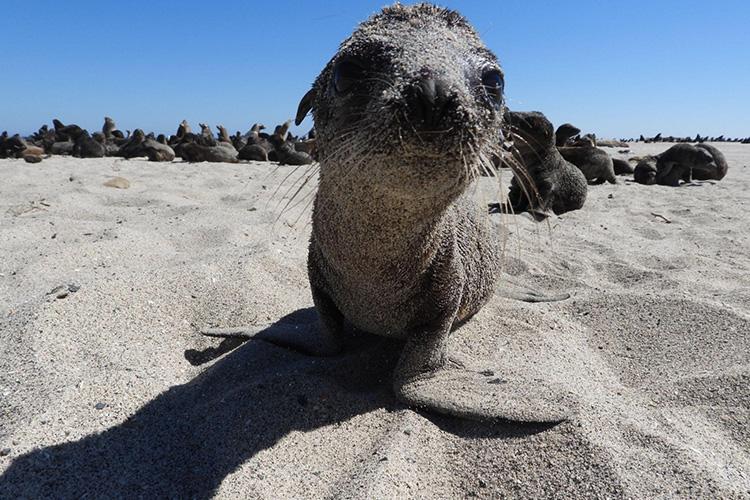
Although located in sunny California, NOAA researchers fondly refer to the island as ‘the island of fog and wind’ due to the unpredictable conditions that scientists must weather. Chris got the chance to experience this firsthand. “Most of the days that we were on the island were foggy and VERY windy. San Miguel Island is the most northwest of the Channel Islands, and half of it is unprotected by the lee created by the California Bight starting at Point Conception, leaving it exposed to the prevailing cool northwest winds. This meant that most of the time we were bundled up in many layers,” Chris said. “The weather also proved to be a challenge to traveling. It took four days for me to return to the mainland because a helicopter or plane couldn’t land on the island due to fog. However, when it was clear and sunny, it was absolutely incredible. Being able to see miles of ocean allowed for opportunities to see whale blows at a distance, incredible sunsets, and stunning coastlines.”
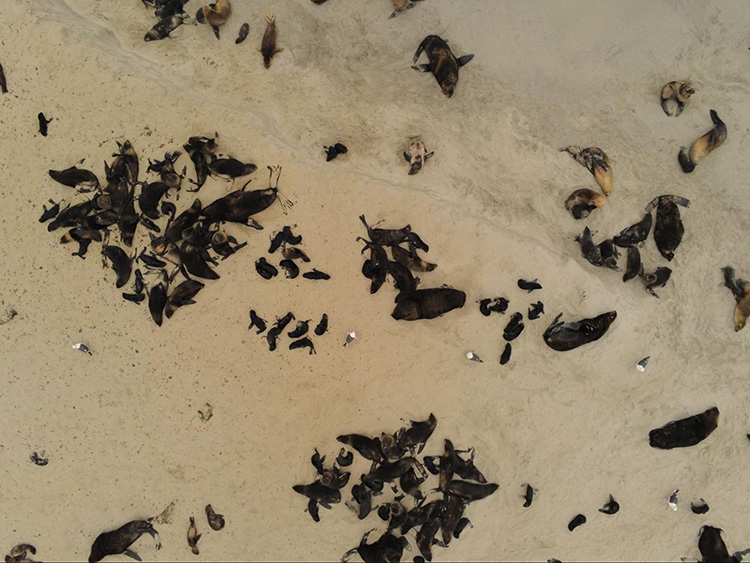
Being able to apply his studies so far at UW to this research experience was a useful part of the internship for Chris. “I was able to apply what I’ve learned in classes to my work, from lab protocols and Microsoft Excel, to making observations about seal and sea lion feeding behaviors, social behaviors, and effects of climate change,” Chris shared. “It was inspiring to know that what I’m studying in class is applicable to real world research. I was also able to speak with research biologists, and they shared with me their personal journeys through academia and helped me think about my own.”
Pinnipeds weren’t the only species Chris came across during his five-week trip to San Miguel. “San Miguel Island is host to large gull rookeries, and this year their populations were noticeably low and we only spotted a few chicks,” Chris said. “Our colleague on the island, Jim Tietz from Point Blue Conservation Science, confirmed with colleagues at the Farallon Islands National Wildlife refuge that the gull populations were struggling on the Farallon Islands as well.”
